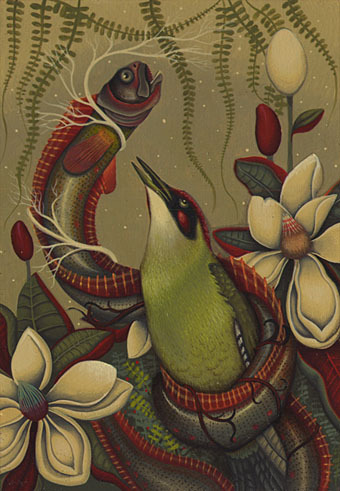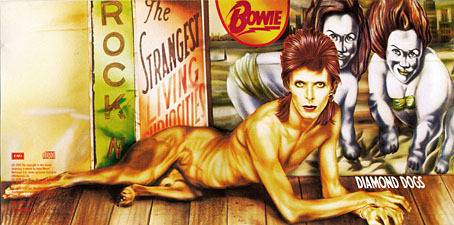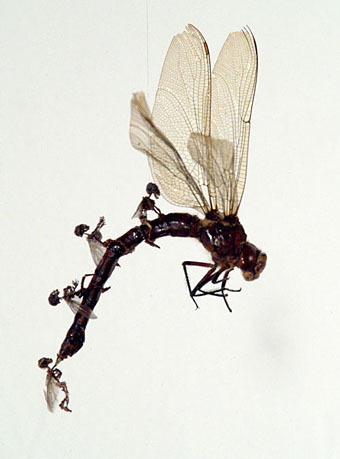John Coulthart's Blog, page 296
October 3, 2011
Murmur Become Ceaseless and Myriad

Efflaration (1952) by Austin Osman Spare.
The Austin Spare revival continues with another exhibition, Murmur Become Ceaseless and Myriad at Flat Time House, London, curated by Mark Titchner. Unless I've missed something this is a significant moment since it's the first time Spare's work has been paired with that of a more contemporary artist, the late John Latham (1921–2006) whose former home provides the exhibition space.
Biographically, the artists have a lot in common: a reticence to engage with the art establishment or the commercial art market; superficial correspondences with the work of their contemporaries but isolation by force of their ideas. The artistic genius of both these artists was, in the main, recognised by their peers, even if the subject of their work was not entirely understood.
In spite of this, discussion of Spare's practice has largely related to arcana and magic, despite his training in fine art and early mainstream successes. Conversely, Latham's work has been understood primarily in relation to the conceptual art practices of the 1960s and 70s. This exhibition broadens these perspectives, presenting their work in the context of two parallel experimental practices. (more)
There's also a somewhat tenuous connection between the pair in the figure of Alan Moore, a Spare enthusiast who in 1992 appeared with John Latham and a number of other literary and artistic types in The Cardinal and the Corpse, a TV film by Iain Sinclair and Chris Petit which really ought to be on YouTube but isn't. It's worth a watch if you can find a copy. Murmur Become Ceaseless and Myriad runs until 30th October.
Previously on { feuilleton }
• Kenneth Grant, 1924–2011
• New Austin Spare grimoires
• Austin Spare absinthe
• Austin Spare's Behind the Veil
• Austin Osman Spare
October 2, 2011
Main aesthetics
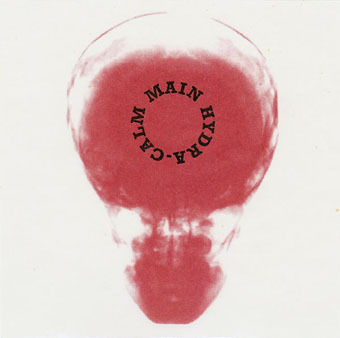
Hydra-Calm (1992).
It's always good to find a group of musicians who not only make the kind of sounds you like but also package their work effectively. Having read the Quietus interview with Robert Hampson last week I was going back through the catalogue of Hampson's 90s group Main and thinking again how well the design of their digipak singles and albums complemented their music. Main evolved out of an earlier rock outfit, Loop, and the earliest Main productions still bear some trace of the trancey Loop approach to rock structures. The first Main album, Hydra-Calm, was released on Situation Two, and comes packaged like the first album from Faust, with an X-ray of a skull on a transparent sheet replacing the X-ray fist of the German group.
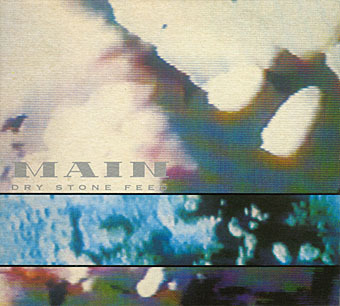
Dry Stone Feed (1993).
With a move to the Beggars Banquet label a year later, a different design approach was adopted which set the template for nearly all the Main releases during the 1990s. An outfit (or person) named Avida is credited with Main's design, with the name being adjusted on various releases to Avida Design, Avida Formations, Avida Hydroforms and Avida Iceforms. The decision to dwell on varieties of texture matches the evolution of the group's music from arrangements of guitar, bass and drums to abstract and increasingly minimal fields of sound; in this respect, Deliquescence was a perfect title. Hampson and co. created their sound fields by subjecting guitar noise to unspecified sampling and effects processes. When Simon Reynolds invented the term "Post-rock" to describe some of the musical developments happening in the 1990s, Main always seemed to be exemplars of the term, they really did go from being a bona fide rock band to a group pushing sound far beyond anything to do with rock music at all.
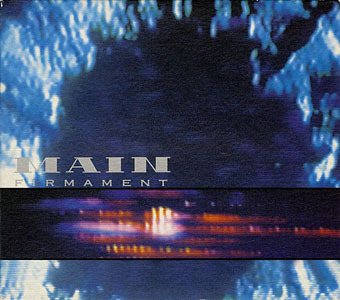
Firmament (1993).
The photos used by Avida Design start out as shots of TV screens or computer monitors then range through the natural world with close-ups of rock formations, lichen, wood grain and underwater ice. The typography is nearly always a copperplate font printed in metallic silver ink. The most satisfying release for me was the Hz set of six CD-singles released from mid-1995 to 1996, the last of which came with a box to place the singles in and a booklet containing symbols which relate to each disc. Hz is the peak of their output, and although it was later released as a double-disc set I prefer the box.
Anyone looking for these releases today can find copies for sale at Discogs.com. Robert Hampson is still active, his site is here. A few more Main covers follow.
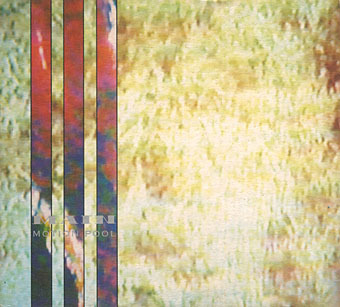
Motion Pool (1994).
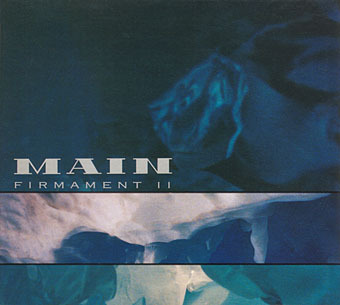
Firmament II (1994).
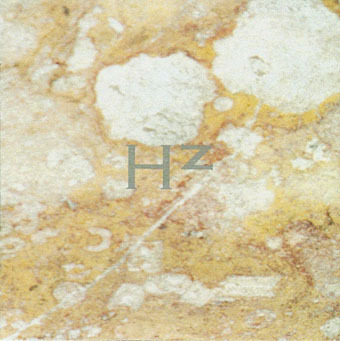
Hz (1995–6).
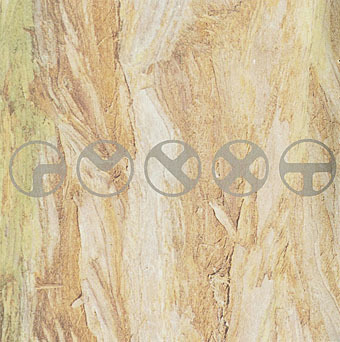
Hz booklet.
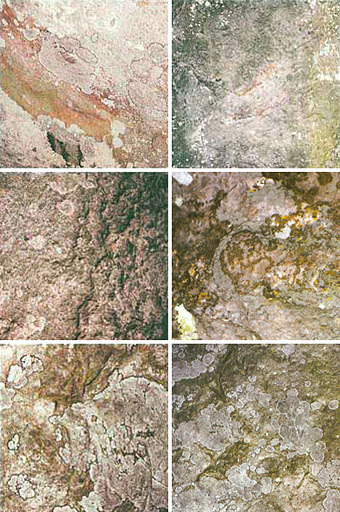
The Hz singles: Maser, Terminus, Haloform, Corona, Kaon, Neper.
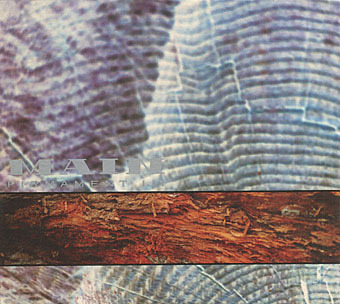
Firmament III (1996).
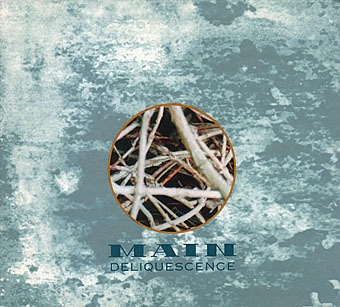
Deliquescence (1997).
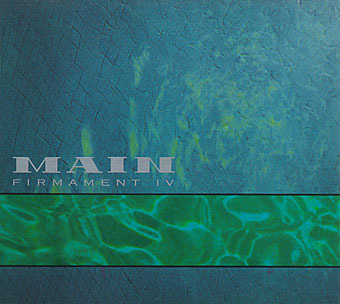
Firmament IV (1998).
Previously on { feuilleton }
• Main
October 1, 2011
Weekend links
Struggle (2009) by Lindsey Carr.
• "Twilight Science is an imprint for sound, music and DVD editions initiated by artist Paul Schütze. We will progressively publish all back catalogue, new projects and collaborations. These will include works by Phantom City, NAPE, Schütze-Hopkins and others." Related (because Paul Schütze remixed Main): Main Feed The Collapse, Neil Kulkarni talks to Robert Hampson.
• "You can't really narrate or display this situation, you can only, endlessly, contemplate it. When the writer or director gets tired of the iterations, he tells us who the mole is." Michael Wood on the novel, (superb) television series and recent film of Tinker, Tailor, Soldier, Spy.
• "Havin' a dick is pretty fuckin' awesome" says Horst, a new gay magazine limited to 1000 copies. Related (well, there's a guy in and out of his underwear): Naked Lunch, a fashion shoot very tenuously based on David Cronenberg's film.
"At first, I tried fighting bullies one-on-one, but they don't fight fair; they fight two and three on one," Bennett said. So the youths got together and "started carrying mace, knives, brass knuckles and stun guns, and if somebody messed with one of us then all of us would gang up on them."
"Gay black youths go from attacked to attackers" says the headline. A group of genuine Wild Boys; William Burroughs would have approved.
• Tor.com reminded me of Sally Cruikshank's amazing animated film Face Like a Frog (1987) which features a score and Cab Calloway-style song by Danny Elfman.
• It's 1969, OK? Pádraig Ó Méalóid talks with Kevin O'Neill about the Swinging League of Extraordinary Gentlemen.
• In the Tumblr labyrinth this week: Fuck Yeah St Sebastian and Gender is Irrelevant.
• For when you need some motherfucking placeholder text: Samuel L Ipsum.
• "Study finds 'magic mushrooms' may improve personality long-term."
• Solar Megalomania: paintings by Leonora Carrington.
• It's all fun and games until Charles Manson turns up.
• Firmament II (1993) by Main | Firmament IV (1993) by Main | Reformation (1994) by Main.
September 30, 2011
A Wilde Night

A couple more pieces from yesterday's Posters in Miniature. The drawing above is entitled A Wilde Night and credited to Claude Fayette Bragdon (1866–1946) whose design work has appeared here before. Bragdon was an acquaintance of Will Bradley's, and like Bradley was a man of many talents being variously employed as an architect, writer and stage designer. Bragdon and Bradley both worked together on The Chap-Book, Herbert Stone's Chicago periodical which commenced publication in 1894, the same year as The Yellow Book, a magazine whose style and light-hearted content Stone and co. seemed keen to emulate. Bragdon's small drawings for The Chap-Book are less Beardsley-like than Bradley's designs which is why this very overt homage appears as a surprise.

Bragdon's picture is undated but the female figure is taken from Beardsley's cover for the first issue of The Yellow Book which would place it in around 1894; the satyr-like male is an odd blend of bits of Beardsley's male and female figures. Aubrey, however, would never have drawn bats like Bragdon's, or a sleeping policeman…too gauche, my dear. As for the Wildeness, 1894 was only a year away from Oscar's trial, a time when London was buzzing with scandalous rumours, none of which appear to have reached Chicago.

Also in Posters in Miniature is this piece by another American, Orlando Giannini (1860–1928), a glass designer and another Chicagoan who worked for a while with Frank Lloyd Wright. This design is dated 1895 and struck me with its radical appearance, so very different from the evolving Art Nouveau styles of the time. Giannini's work as a glass designer evidently brought a different sensibility to graphic design, one which would have still looked bold and original ten years later.
Elsewhere on { feuilleton }
• The illustrators archive
• The Oscar Wilde archive
Previously on { feuilleton }
• Echoes of Aubrey
• After Beardsley by Chris James
• Illustrating Poe #1: Aubrey Beardsley
• Beardsley's Rape of the Lock
• The Savoy magazine
• Beardsley at the V&A
• Merely fanciful or grotesque
• The art of Claude Fayette Bragdon, 1866–1946
• Aubrey Beardsley's musical afterlife
• Aubrey by John Selwyn Gilbert
• "Weirdsley Daubery": Beardsley and Punch
• Alla Nazimova's Salomé
September 29, 2011
Will Bradley posters

More from American illustrator and designer Will Bradley (1868–1962) from the height of his Beardsley period circa 1894–95. These are from a collection by Edward Penfield entitled Posters in Miniature (1897) in which Bradley's work receives more attention than some of his better-known contemporaries. Half of these designs are familiar, the rest I hadn't seen before, including the peacock piece below. Even though Bradley was trying out various Beardsley moves at this stage, his work was always a lot more versatile than the lesser imitators. More of Bradley's designs, and work by other artists, can be found in the scanned edition of Penfield's book at the Internet Archive.











Elsewhere on { feuilleton }
• The illustrators archive
Previously on { feuilleton }
• Will Bradley's Fringilla
• Bradley does Beardsley
September 28, 2011
Brion Gysin's walk, 1966
The Cut-Ups (1966).
More of the present preoccupation. Choosing Brion Gysin as a subject seems like a detour but the shots above are from Antony Balch's 1966 film The Cut-Ups which also features William Burroughs, Ian Sommerville and someone-or-other's cute boyfriend of the time who's only ever credited as "Baby Zen", a person about whom I know nothing at all.
I first saw The Cut-Ups in video form projected on the screens of the Haçienda nightclub in Manchester during their Final Academy evening in 1982, an event at which Burroughs and John Giorno both gave readings. The film on that occasion was mixed with some of the other Antony Balch shorts including Towers Open Fire, and they made a strong (and bewildering) impression. The Cut-Ups, as noted a few days ago, may have inspired some of the flash edits in Performance, although Nicolas Roeg had been cinematographer on Petulia for Richard Lester the year before, a film which uses similar Resnais-like flashbacks and flash-forwards. In Balch's film several sequences each a foot in length are cut together at random, a process which was a lot more radical in 1966 than it looks now. The opening sequence shows Brion Gysin walking out of a shop, along a street, down an alley and into the Rue Git le Coeur where the Beat Hotel was located at no. 9, and into whose door he disappears. I visited the street the last time I was in Paris, and took a few snaps whilst there, but it wasn't until I rewatched The Cut-Ups a couple of years later that I realised I'd made the same walk as Gysin, having inadvertently discovered the narrow passage (the Rue de L'Hirondelle) which connects Git le Coeur with the Boulevard Saint-Michel.
The corner of the Boulevard Saint-Michel where Gysin's walk begins.
The route can be traced (after a fashion) using Google's Street View where the photos have the usual drawbacks of being positioned high in the air and with a field-of-view which makes narrow spaces look a lot more cramped than they seem when you're there. For those who can't visit Paris, however, you at least get a sense of the Latin Quarter even though it's a lot more gentrified than it was in 1966. The Beat Hotel, as I've noted before, is now the expensive Hotel du Vieux Paris whose website makes no mention of their establishment having once been cheap lodgings for depraved writers, artists and junkies. As for the Gysin film, I still wonder where he began his walk: was it at the Tabac Saint-Michel or elsewhere? You can judge for yourself at Ubuweb which has a copy of The Cut-Ups in its Burroughs film collection.
Rue de L'Hirondelle from the Boulevard Saint-Michel.
Rue de L'Hirondelle from Rue Git le Coeur.
Rue Git le Coeur looking towards the Seine. The former Beat Hotel is down the street on the right.
Previously on { feuilleton }
• Burroughs in Paris
• William Burroughs interviews
• Soft machines
• Burroughs The Movie
• William S Burroughs: A Man Within
• The Final Academy
• William Burroughs book covers
• Towers Open Fire
September 27, 2011
Burroughs in Paris
William Burroughs and Maurice Gerodias.
More specifically, William Burroughs photographed in 1959 for Life magazine by Loomis Dean. This was no doubt a story based around the publication of The Naked Lunch by Olympia Press: in the full set there's shots of Burroughs with Olympia boss Maurice Gerodias, some pictures of the author signing copies of his novel (which can also be seen resting on the newspaper above), and many shots of the shabby interior of the Beat Hotel where the walls of Burroughs' and Brion Gysin's rooms are decorated with Gysin's calligraphic paintings.
Burroughs and Gysin.
Over at the Time archives there's an amusingly snotty review from 1962 of the first US publication of The Naked Lunch. The reviewer isn't credited but they trot out details of Burroughs' history with the implication that nasty people can't possibly be good or worthwhile writers. In 1962 the Pulitzer Prize for Fiction was won by something called The Edge of Sadness by Edwin O'Connor. What? Who? Exactly.
Previously on { feuilleton }
• William Burroughs interviews
• Soft machines
• Burroughs The Movie
• William S Burroughs: A Man Within
• The Final Academy
• William Burroughs book covers
• Towers Open Fire
September 26, 2011
The recurrent pose #44
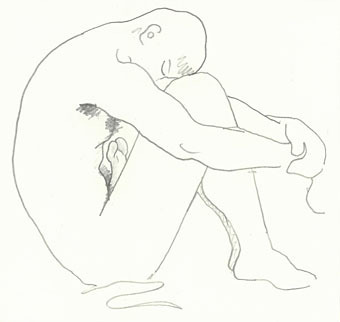
An item found in a collection of erotic drawings of dubious provenance, this piece is credited to Jean Cocteau. While I can't be 100% certain it is Cocteau's work it does closely resemble his other erotic drawings, and the rendering of the ear and hands is typical. Cocteau (or whoever) here does the obvious jokey thing with the Flandrin pose, something I'm surprised I haven't seen already.
Elsewhere, Nathalie spotted a feature about the photography of Yannis Bournias which features another close variation as well as being gorgeous pictures in their own right.
Elsewhere on { feuilleton }
• The recurrent pose archive
Previously on { feuilleton }
• The writhing on the wall
• Le livre blanc by Jean Cocteau
• Cocteau's sword
• Cristalophonics: searching for the Cocteau sound
• Cocteau at the Louvre des Antiquaires
• La Villa Santo Sospir by Jean Cocteau
September 25, 2011
William Burroughs interviews
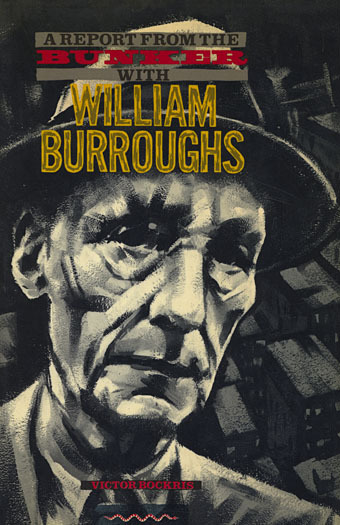
With William Burroughs: A Report from the Bunker (1982) by Victor Bockris. Design by Neville Brody.
If it's interviews you want, some of the most entertaining are in Victor Bockris's collection of conversations between El Hombre Invisible and the various New York notables ferried round to sit at Burroughs' table in his Bowery Bunker. The British edition published by Vermilion was always preferrable for its Neville Brody cover design beside which the US original looks very dull indeed. The encyclopedic Burroughs site Reality Studio has copious lists of earlier Burroughs interviews. They also note the occasions when he put on his journalist hat and went out to interview someone equally famous, usually at the behest of a music magazine. A couple of those pieces are online thanks to the diligence of various fans.
Diamond Dogs (1974), a blend of Lou Reed, George Orwell and William Burroughs.
One such is the 1974 interview with David Bowie for Rolling Stone in which Bowie discusses Burroughs as an influence while Burroughs informs the singer that the heroes of his latest novel, The Wild Boys, favour the Bowie knife as a weapon:
Bowie: Nova Express really reminded me of Ziggy Stardust, which I am going to be putting into a theatrical performance. Forty scenes are in it and it would be nice if the characters and actors learned the scenes and we all shuffled them around in a hat the afternoon of the performance and just performed it as the scenes come out. I got this all from you Bill… so it would change every night.
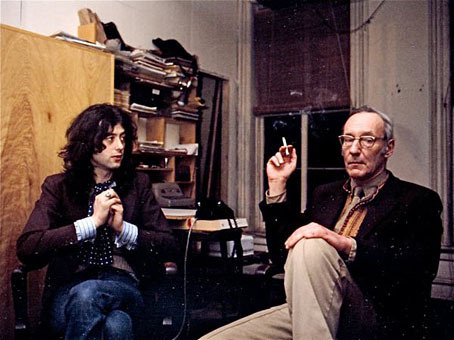
A year later Burroughs got together with Jimmy Page for Crawdaddy magazine where the discussion circles around some of the same subjects, notably the writer's obsession with sound as a weapon. There's also this comment from Burroughs which is the kind of thing that always gets my neurons firing:
Antony Balch and I collaborated on a film called Cut-Ups, in which the film was cut into segments and rearranged at random. Nicolas Roeg and Donald Cammell saw a screening of the film not long before they made Performance.
Roeg later directed Bowie, of course, and is one of the dinner guests in With William Burroughs, while Jimmy Page and Donald Cammell both appear in Kenneth Anger's Lucifer Rising. The connections go round and round… Read the whole piece in a post I made a few years ago at the late, lamented Arthur magazine site.
Previously on { feuilleton }
• Soft machines
• Burroughs The Movie
• William S Burroughs: A Man Within
• The Final Academy
• William Burroughs book covers
• Towers Open Fire
September 24, 2011
Weekend links
Art by Tessa Farmer.
• An exhibition of Tessa Farmer's art is running at Viktor Wynd Fine Art, London, until October 30th. On Saturday, October 1st, Strange Attractor hosts Good Neighbours: Faeries, Folklore and the Art of Tessa Farmer also at Viktor Wynd.
• Unearthing The Psychedelic Harp: "David Moats talks to harpist and songwriter Serafina Steer about her work with John Foxx and Patrick Wolf, being classically trained, the difficulties of doing live soundtracks and psychedelia."
• And speaking of psychedelia, Arkhonia is still blogging up a storm here, here and here about the lost Beach Boys album, Smile, the farthest Brian and co. ventured into the tripped-out weirdness of 1967. The complete original recordings will finally be released in November.
• "'We've arrived at a level of commodification that may have negated the concept of counterculture,' Gibson says in the Paris Review." William Gibson profiled by Thomas Jones.
One of the qualities I always stress when talking about this design work influenced by Surrealism is its enormous boldness and creative freedom, which is something of a paradox in many cases, since the Czech and Polish designs were created under communist regimes. So, while Uncanny documents a significant current in the history of 20th-century visual culture, the show also has a polemical intention aimed, quite deliberately, at our circumstances now. Students who encounter these images in lectures sometimes feel constrained by their conception of what they — or their teachers — regard as acceptable in today's marketplace. At times, this has struck me as being a form of insidious self-censorship. (more)
Rick Poynor: Jan Svankmajer and the Graphic Uncanny.
• The exhibition curated by Mr Poynor last year, Uncanny: Surrealism and Graphic Design, is now showing at the Kunsthal in Rotterdam until early December. Related: MizEnScen's somber, surrealist collages.
• Howard Pyle's Book of Pirates (1921) at Golden Age Comic Book Stories, the Urtext of buccaneer imagery.

Another of those homoerotic religious pictures: Jacob Wrestling with the Angel (1876) by Léon Bonnat. Via Babylon Baroque.
• Celebrating the 250th anniversary of Laurence Sterne's marbled page: Emblem of My Work.
• John Martin's Pompeii painting finally restored after 1928 Tate flood damage.
• The Spectral Dimension: "where the paranormal and popular culture collide".
• The Writing of Stones (1970) by Roger Caillois at 50 Watts.
• When silliness was an avant garde strategy: video from 1974 of Brian Eno performing China My China and (in better quality) The Seven Deadly Finns. (Go here for lyrics of the latter.)
John Coulthart's Blog
- John Coulthart's profile
- 31 followers


